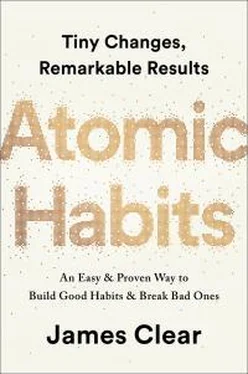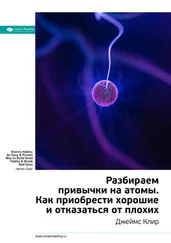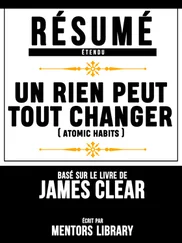I often find myself gravitating toward social media during any downtime. If I feel bored for just a fraction of a second, I reach for my phone. It’s easy to write off these minor distractions as “just taking a break,” but over time they can accumulate into a serious issue. The constant tug of “just one more minute” can prevent me from doing anything of consequence. (I’m not the only one. The average person spends over two hours per day on social media. What could you do with an extra six hundred hours per year?)
During the year I was writing this book, I experimented with a new time management strategy. Every Monday, my assistant would reset the passwords on all my social media accounts, which logged me out on each device. All week I worked without distraction. On Friday, she would send me the new passwords. I had the entire weekend to enjoy what social media had to offer until Monday morning when she would do it again. (If you don’t have an assistant, team up with a friend or family member and reset each other’s passwords each week.)
One of the biggest surprises was how quickly I adapted. Within the first week of locking myself out of social media, I realized that I didn’t need to check it nearly as often as I had been, and I certainly didn’t need it each day. It had simply been so easy that it had become the default. Once my bad habit became impossible, I discovered that I did actually have the motivation to work on more meaningful tasks. After I removed the mental candy from my environment, it became much easier to eat the healthy stuff.
When working in your favor, automation can make your good habits inevitable and your bad habits impossible. It is the ultimate way to lock in future behavior rather than relying on willpower in the moment. By utilizing commitment devices, strategic onetime decisions, and technology, you can create an environment of inevitability—a space where good habits are not just an outcome you hope for but an outcome that is virtually guaranteed.
Chapter Summary
The inversion of the 3rd Law of Behavior Change is make it difficult .
A commitment device is a choice you make in the present that locks in better behavior in the future.
The ultimate way to lock in future behavior is to automate your habits.
Onetime choices—like buying a better mattress or enrolling in an automatic savings plan—are single actions that automate your future habits and deliver increasing returns over time.
Using technology to automate your habits is the most reliable and effective way to guarantee the right behavior.
HOW TO CREATE A GOOD HABIT
The 1st Law: Make It Obvious
1.1:Fill out the Habits Scorecard. Write down your current habits to become aware of them.
1.2:Use implementation intentions: “I will [BEHAVIOR] at [TIME] in [LOCATION].”
1.3:Use habit stacking: “After [CURRENT HABIT], I will [NEW HABIT].”
1.4:Design your environment. Make the cues of good habits obvious and visible.
The 2nd Law: Make It Attractive
2.1:Use temptation bundling. Pair an action you want to do with an action you need to do.
2.2:Join a culture where your desired behavior is the normal behavior.
2.3:Create a motivation ritual. Do something you enjoy immediately before a difficult habit.
The 3rd Law: Make It Easy
3.1:Reduce friction. Decrease the number of steps between you and your good habits.
3.2:Prime the environment. Prepare your environment to make future actions easier.
3.3:Master the decisive moment. Optimize the small choices that deliver outsized impact.
3.4:Use the Two-Minute Rule. Downscale your habits until they can be done in two minutes or less.
3.5:Automate your habits. Invest in technology and onetime purchases that lock in future behavior.
The 4th Law: Make It Satisfying
HOW TO BREAK A BAD HABIT
Inversion of the 1st Law: Make It Invisible
1.5:Reduce exposure. Remove the cues of your bad habits from your environment.
Inversion of the 2nd Law: Make It Unattractive
2.4:Reframe your mind-set. Highlight the benefits of avoiding your bad habits.
Inversion of the 3rd Law: Make It Difficult
3.6:Increase friction. Increase the number of steps between you and your bad habits.
3.7:Use a commitment device. Restrict your future choices to the ones that benefit you.
Inversion of the 4th Law: Make It Unsatisfying
You can download a printable version of this habits cheat sheet at: atomichabits.com/cheatsheet
THE 4TH LAWMake It Satisfying
15 The Cardinal Rule of Behavior Change
IN THE LATE 1990S, a public health worker named Stephen Luby left his hometown of Omaha, Nebraska, and bought a one-way ticket to Karachi, Pakistan.
Karachi was one of the most populous cities in the world. By 1998, over nine million people called it home. It was the economic center of Pakistan and a transportation hub, with some of the most active airports and seaports in the region. In the commercial parts of town, you could find all of the standard urban amenities and bustling downtown streets. But Karachi was also one of the least livable cities in the world.
Over 60 percent of Karachi’s residents lived in squatter settlements and slums. These densely packed neighborhoods were filled with makeshift houses cobbled together from old boards, cinder blocks, and other discarded materials. There was no waste removal system, no electricity grid, no clean water supply. When dry, the streets were a combination of dust and trash. When wet, they became a muddy pit of sewage. Mosquito colonies thrived in pools of stagnant water, and children played among the garbage.
The unsanitary conditions lead to widespread illness and disease. Contaminated water sources caused epidemics of diarrhea, vomiting, and abdominal pain. Nearly one third of the children living there were malnourished. With so many people crammed into such a small space, viruses and bacterial infections spread rapidly. It was this public health crisis that had brought Stephen Luby to Pakistan.
Luby and his team realized that in an environment with poor sanitation, the simple habit of washing your hands could make a real difference in the health of the residents. But they soon discovered that many people were already aware that handwashing was important.
And yet, despite this knowledge, many residents were washing their hands in a haphazard fashion. Some people would just run their hands under the water quickly. Others would only wash one hand. Many would simply forget to wash their hands before preparing food. Everyone said handwashing was important, but few people made a habit out of it. The problem wasn’t knowledge. The problem was consistency.
That was when Luby and his team partnered with Procter & Gamble to supply the neighborhood with Safeguard soap. Compared to your standard bar of soap, using Safeguard was a more enjoyable experience.
“In Pakistan, Safeguard was a premium soap,” Luby told me. “The study participants commonly mentioned how much they liked it.” The soap foamed easily, and people were able to lather their hands with suds. It smelled great. Instantly, handwashing became slightly more pleasurable.
“I see the goal of handwashing promotion not as behavior change but as habit adoption,” Luby said. “It is a lot easier for people to adopt a product that provides a strong positive sensory signal, for example the mint taste of toothpaste, than it is to adopt a habit that does not provide pleasurable sensory feedback, like flossing one’s teeth. The marketing team at Procter & Gamble talked about trying to create a positive handwashing experience.”
Читать дальше




![Джеймс Клир - Атомные привычки [Как приобрести хорошие привычки и избавиться от плохих]](/books/403243/dzhejms-klir-atomnye-privychki-kak-priobresti-horosh-thumb.webp)



